|
Are you thinking about going on a Ghost Tour this summer holidays? If you are, these are the things that Daniel Phillips, the founder of SydneyGhostTour.Com suggests you need to be aware of before you hang out with the “things that go bump in the night…”
1. Don’t drink or do drugs: “You will be walking around in the dark, and can hurt yourself, if you are intoxicated. Mediums and Psychics also strongly recommend that before putting yourself in contact with ghosts, do not put chemicals in your body that affect your health. It could give unwanted paranormal energies an invitation…” 2. Know what you are looking for, and tell your guide. “Are you there to be frightened silly, to have a good laugh – or are you a history buff? A good ghost tour has elements of all three in different measures. Ask the tour operator before you make a booking what their specialty is, and when you arrive, let the guide know what you expect. A good guide will know their stuff so well, that they will tend to tailor how they present the tour accordingly” 3. Choose who you go with carefully. “Ghost tours are events people are either really positive about, or have negative pre-conceived ideas about. Bottom line- you are going out to have fun. If someone in your social group is really not keen to come along, or has a very negative opinion about this kind of tour – leave them at home. A silently hostile skeptic, or a loud obnoxious one, will make your night miserable, and affect the enjoyment of the rest of the tour group.” 4. Patience. “Looking for Ghosts is a lot like fishing. On some ghost tours, you'll find paranormal activity. On others, you won't. Sometimes what you thought was paranormal can be explained by natural causes. Treat it as an entertainment activity – and if something freaky happens, it is a bonus!” 5. Plenty of flashlights. “Always bring plenty of flashlights, along with extra batteries. Be Safe!” 6. If you are serious – bring an EMF Meter (Electromagnetic Field Meter). “An EMF meter measures electromagnetic radiation, and can be a very useful tool. Usually, areas of paranormal activity produce strong magnetic fields, and have high EMF readings. Be careful, though. EMF meters can produce false positives. Power lines, appliances, mobile phones, and fuse boxes, can give off strong EMF readings – so check first. One strong indication of ghosts is EMF's that move. (The background EMF needs to remain constant in order to locate such fields.) Usually, these EMF's will either move away from you, or follow you.” 7. Wear good walking shoes and warm, comfortable clothing. “Walking around haunted places, and cemeteries at night, can and does get cold..” 8. A camera – “Bring either a digital camera or a 35 mm camera. If you use a 35 mm camera, bring several fresh rolls of high-speed film. For best results, use 400 speed film or higher. If you use a digital camera, use the highest resolution and make sure the memory stick is empty (or has enough storage capacity).” 9. Video camera. “Always use clean new recording media, or a fresh, clean memory micro SD card – the largest capacity one your video camera will accept. Gyro stabilized ones are good for hand held models. Switch torches off before shooting to prevent light reflection.” 10. An open mind. “Go along on a Ghost Tour with a positive attitude, an open mind, and use your good sense. Remember to Have fun.” Daniel Phillips of SydneyGhostTour.Com is currently running family friendly “Ghosts of Christmas past” tours, that explain the traditions of Christmas, from 6.15pm to 8.00pm. Adults Only tours run at 8.15pm and 11.15pm on Sydney’s North Shore. Details of these tours can be found at www.sydneyghosttour.com, or alternatively on 02 8197 0363.
1 Comment
I saw a story on " Resomation" or " Eco- Cremation" this morning on the Channel 9 Today show. While they did not upload the segment - this is a US video of it. If you ever had the urge to have a relative digested in a big metal stomach, and flushed down the drain - this is your thing! ;-D It all makes sense - the process of using alkaline solution and water, then boiling that with a cadaver in it, is often used to make the skeletons you see in nature museums. It has a definite "Yuck" factor attached to it, when the biological matter goes down the drain in the consistency of oil, into a sewer pipe. somehow - I can't see that idea catching on. However - I do notice that there is a thriving rose garden around the Crematoria at Rookwood cemetery... I could be wrong! “Mum, I am so bored...” – the phrase that drives parents crazy on school holidays. If you are a parent, with school term finishing today, you are probably on the look- out for something that will keep your kids entertained right now. If possible, you probably also want to do something more than just fills in time in a way that makes your life easier – not everything on offer right now does that. Unfortunately, the phrase “ Everything I like is either illegal, immoral or fattening!”, is not a guide you can use to bring up kids with, as a parent.
But this does not mean that you can’t do something unusual, that is fun for them, AND for you too! In Sydney’s lower North Shore, SydneyGhostTour.Com will be running “ Family Friendly” Ghost tours, (for parents with kids from 9 up,) visiting allegedly cursed aboriginal sites, a Victorian era haunted mansion , and a historic cemetery ( the oldest on the north shore) complete with resident ghosts. Will you and your kids feel the chill of electricity running up your spine, or a shiver through your body from a spirit passing through you, this School holidays? Daniel Phillips, local historian, Author, and owner of SydneyGhostTour.Com said “ Real life is always weirder than anything you can make up. This place has stories of Aboriginal curses by the first local residents, the Cammeraigals. There is a skull buried here, of a man eaten by cannibals, and the spirits of two little girls that haunt a playground, that is built on top of their dead bodies. That is not even scratching the surface. Give me two hours, and I guarantee you will laugh, feel chills through your body, and never look at Sydney landmarks the same way ever again!” SydneyGhostTour.Com will be running the “Family Friendly” Ghost tours from 5.50pm and 8.00pm, on Tuesday’s through to Sunday nights, this school holidays. The normal “Adults only” tours will still be starting at 8.15pm, and 11.15pm. Ticket prices are $20 per student under 16, $25 for students over 16, and $35 per adult, with family pricing available. All tour participants under 16 must be accompanied by a responsible adult on the tour. Tours begin at the entrance of Stocklands Mall Cammeray Square, on the corner of Miller Street and Amherst Streets in Cammeray. Numbers are limited, bookings are essential and can be made by by calling 02 8197 0363, or by visiting www.sydneyghosttour.com It is hard to believe that in nearly three years, it will be the 100th anniversary of the Gallipoli landings. The memory of these people has passed into legend, and the last of the Anzacs, Alec William Campbell, who was a 16 year old kid at the time of the landings, passed away in May 2002. All that remains of these men and women is in books, letters, on plaques in public buildings, monuments and cemeteries.
We walk past these things every day – just one more detail in an information overloaded world. We normally ignore these things, like the other minutiae of life, just to be able to concentrate on what is at hand. Yet, they stand as mute reminder of a time past. A time when the collective hearts of our country were broken, by a level of tragedy that we find hard to imagine in 2011. Yet this experience is part of what we rely on as part of our national story – who we define ourselves to be. In the rush to embrace the heroic and admirable, in the midst of all of the tragedy, there is a tendency to want to “dry-clean” the past. The details of the more complete picture get downplayed, and left out entirely over time. All too ugly and painful – who wants to think about that? Focus on the things that make us feel good – and leave all of the rest behind. “Less-(that) we remember” seems to be the order of the day in the early twenty-first century – or at least, a very, very selective memory seems to be in operation. It seems to forget one basic principle… in order to appreciate the candle light, you need the dark background so that the stark contrast brings it into focus. As Aussies, we forget that it was not some kind of a prolonged cricket match, between us and Turkey alone. In fact, even putting us and the Kiwis together as a group, we were only a fraction of a number of landings that took place on the Dardanelles peninsula that day – one beach area out of six invasion beaches, on the first real “D-Day” in World War One. We were a part of a much bigger whole. We were tens of thousands, when hundreds of thousands of troops from other parts of the commonwealth, and our allies like the French, with their colonial allies, were also landing further around that part of Turkey. We also overlook that our troops, landing on those beaches were “green” troops, most of whom had never been in combat, that are prone to make stupid mistakes. There were only a few handfuls of veterans from the Boer war and the Boxer rebellion who had seen any combat before in the troops that landed. While there was a lot of youthful enthusiasm and zeal from troops who were blissfully ignorant of what war really was, this is no substitute for being able to rationally work as a team when you are being shot at, as we found out the hard way. Those stupid mistakes early in the piece, like bunching up during the landing, and then staying put too long on the beach, gave the Turkish defenders the chance to bring in reinforcements and artillery, and to bottle up and bleed the invaders dry by a rain of gunshot and shell. Anzac beach, or that stretch of “Z” beach at Ari Burnu, is the bottom of a kind of natural amphitheatre, where Anzac beach is the centre stage, that everyone up on the hills can see, shoot at, and kill people, from kilometers away. Nobody seems to have said: “ Fellas, we are in the wrong place. The Beach we are supposed to be on is about 3km south, and this beach is a shooting gallery where any bastard with a Mauser rifle and ammunition sitting up on those hills is going to feel like he is practicing to win a prize at the Easter show. Lets go to where we are supposed to be!”. It also seems to be forgotten that most of the officers and NCO’s that knew what the plan was supposed to be, were shot and killed, or injured and evacuated right at the beginning first few hours. This left those remaining troops and officers on the beach, milling around like sheep in a slaughter yard, or huddling behind whatever they could find, rather than get as far inland as fast as possible, and away from the beach, up to defendable positions before Turkish reinforcements and artillery could arrive. In other words, We ( the Aussies and Kiwis) got lost. The people who were supposed to be running the operation and knew the plans and orders were killed or injured and taken away in the first few hours. Then, without those instructions passed on, we flat out did not do what we were supposed to be doing. Yet, instead – it seems to be the “done thing” long after the fact, to pretend that all of the death and misery caused there was the fault of bad English management. It is this background of the sheer blood-letting , ugliness and suffering that was the norm of fighting around Anzac cove, that makes the heroism, gallantry, good humour and gentlemanly conduct worth remembering. They were living a waking nightmare, in the most hellish of places. Something else to keep in mind, is that the men wearing the slouch hat were not all 6 feet tall plus, blue eyed blonde, “Clancy of the Overflow” type tanned bushmen and athletes. They were as diverse in their backgrounds from factory workers, to shop clerks, to tradesmen and every other kind of profession you can imagine. Many of the first people to enlist were from the cities. Two battalions of which signed up on the north shore of Sydney, where SydneyGhostTour.Com runs its tours, within days of war being declared. It was their very ordinariness – the fact they were fathers, sons, mothers and daughters, spouses and sweethearts that make their super-human efforts even more remarkable. Yet it was because they were all of these things, that makes their loss so keenly felt. The empty place at the family dinner table, the clothes that would remain hanging in the wardrobe in mute reminder, and the Christmases that would never be shared again with that loved one, became a feature of many Australian households. It isn’t an exaggeration that 1918 as a year where the whole world was in a state of shock and grief. Of all of the best and brightest who went off to war, so many did not come back. Many of those families, not knowing if their loved one would be remembered in any formal way, made memorials to them on the family plots and mausoleums in the St Thomas Cemetery in Crows Nest, and in the Gore Hill Memorial Cemetery on the Pacific Highway, right next to Royal North Shore Hospital. Lone Pine, Quinn’s Post, the Nek , Passchendaele, and many other places that they fell, are memorialized in stone in these lower North Shore Cemeteries. Surprisingly, no one has made the concentrated effort to tell their stories, up until now. This Anzac day 25th of April 2011, there will be two tours, the first starting at Cammeray Square at 9.45am, and the second starting at 1.45pm at The Forum Plaza @ St Leonards railway station, that will tell the stories of these men and women, to whom we owe so much. Advance bookings are essential and can be made on 02 8197 0363, or on www.sydneyghosttour.com. The cost of the tours are Adults $35.00 per person, students and concession card holders $25.00 per person. 10% of profits of SydneyGhostTour.Com are always used to restore and preserve historic sites on all of our tours, however, 10% of the profits from these two Anzac Day tours will be donated to Legacy NSW. Please go to our tours page, or put your details into Crypt Insiders to book your tickets now! COUNTDOWN TIME!
I am putting my thinking cap on for the "15 minutes of fame" for 95.3 Classic rock FM in Sydney where they put you on air to announce / count down your top 10 songs- and plug your work, (in this case www.SydneyGhostTour.com.) My list was: 1. I love rock & roll - Joan Jett 2. Bad to the bone - George Thoroughgood 3. Monster Mash - Boris Pickett & The Crypt Kickers 4. Sympathy for the devil - Guns & Roses 5. Highway to Hell - AC DC 6. When you're strange - The Doors 7. I think I'm paranoid - Garbage 8. WereWolves of London - Warren Zevon ( I had to get William the Weimaraner's favourite "sing along" song in!) 9. Time Warp - Rocky Horror 10. Feed My Frankenstein - Alice Cooper What do you think? Or would you suggest other songs? What would you add? SydneyGhostTour.Com is revealing the often completely hidden aspects of the Early years of European colonisation in Sydney, taken from both a European and an Aboriginal perspective, this Australia Day week.
Beneath the leafy exterior of suburban homes, and 21st century businesses of Sydney is a hidden history that people walk and drive past, and never give a second thought. A history, more colourful, ambitious and often plain weird, than any American Western could ever be. A history that until recently has remained almost completely secret, hidden away in family letters, diaries, government reports and scientific papers that have been hidden away in archives that members of the public have never previously had free access to. Daniel Phillips, founder of SydneyGhostTour.Com was gobsmacked by what he managed to find in his research. “There is an Aboriginal heritage office in Northbridge, within fifteen to twenty minutes walk of where I live near North Sydney, that I knew nothing about. I also discovered that much of the very earliest newspapers, diaries, paintings and even the first photography of Sydney going back as far as the 1840’s, had been digitised and made available through some of our major academic and historic institutions literally around the world. This meant that you could put together a more complete picture of what happened when, where and with whom during the 19th century, faster and more completely than any time before in history.” “Nowhere was that more evident in researching some of the people, the haunted mansions and heritage sites of Sydney. When you can take local legends and verify them with cold, hard documented facts – that is both mind blowing and chilling!” . The benefits of this research has now been combined into SydneyGhostTour.Com’s latest Sydney Ghost Tour. For people wanting to learn the hidden secrets of early Sydney, and the founding of Australia as a country, SydneyGhostTour.Com will be running the Australia Day"Hidden Heritage" Ghost tour. Starting at the family friendly time of 7.15pm, and the adults only sessions at 9.15pm, it will be starting at the entrance of Stocklands Mall Cammeray Square, on the corner of Miller Street and Amherst Streets in Cammeray. Two daytime tours will be run on Australia day – see the website for details. Numbers are limited, bookings are essential and can be made on 8197 0363, or by visiting www.sydneyghosttour.com The Macarthur Chronicle referred to Liz Vincent, the founder of Liz Vincent History and Ghost Tours of Picton, on her passing in Late May May 2009 as a "Living Treasure", and as a local icon who put Picton on the map. Over 13 years she wrote historic articles for newspapers, conducted history and ghost turs, and made the heritage of the district she was so fond of into an enduring legacy. Like most businesses, they are not created in a vaccum, or overnight, and even when there is someone seemingly out front - they are almost always a team effort Any way you cut it, though, Liz still left big shoes behind to fill. Frankly she was only the kind of person you could succeed - you could never actually replace them! Knowing this better than anyone, John Vincent, and their daughter Jennie Davies have been carrying the torch since Liz's passing, running the ghost and history tours .For many years they have co-operatively run their business, with a licencing arrangement with Wollondilly council. This allowed their business to grow responsibly in a council approved way, and brought an enormous benefit to the wider community for over a decade, with open communication and common sense team work with local government.
Up until now, that is... Let me explain. Over the last few years there have been youths that are not NOT part of of the history tours or Ghost tours hanging around near the Redbank Range Tunnel at night acting like hooligans and annoying the local residents. These tunnels are one of the features of the lower picton ghost tour. This tunnel has been featured on national and international television now on numerous occasions for years. A few of the local residents who are uncomfortable with this national and international profile, and the behavior of a few unrelated nitwits not on the tour itself, have been campaigning for the tour to be stopped or sent elsewhere on those grounds . One of these whingers made the complaint to council as to why the Ghost tours not have to make a Development Application ( D/A), not knowing about the existing licencing arrangement. Council, trying to cover it's own tail, then commissions two legal opinions. One more or less confirms the opinion that the existing situation is a reasonable position. The second basically advocates council using the D/A process to cover their own tail. Council, in it's infinite wisdom, then ignores 13 years of co-operation, plus the first legal opinion, and then decides the second legal opinion as the one it is going to follow. They then inform John Vincent that they are going to cancel the licencing arrangement that has been in place for over a decade on the 4th of February 2011, unless he submits a Development Application. A process he has been advised is going to cost him him excess of $4000.00, to have to go cap in hand humbly to council to do what the business has been doing successfully for over a decade, i.e. conduct it's only internationally recognised tourism attraction, that also props up half the service & hospitality businesses in the town. This Development Application has proposed restrictions from council that reduce the number of people who can come on the tour, reducing revenue, and reducing the number of tours to once a month. Unless you are selling QE2 tickets ( tens of thousands of dollars per ticket), no tour company can survive that drop in turnover. But to team this with a dramatic increase in council fees and charges on top of the drop in revenue makes a viable business into a non-viable one. SydneyGhostTour.Com sees this kind of behaviour as a threat to all small business owners who build businesses up from scratch. Instead of addressing the real problem by seeking the appropriate application of Police presence to prevent anti-social behavior, Wollondilly Council appears to be trying to kill the goose that lays the golden eggs. All to please a handful of whingers, and hurting the entire community in the process. We stand with John & Jennie in their fight against what is clearly a case of bureacracy gone mad *** Have you ever wondered how Santa Claus, Christmas trees, Rudolph & the Reindeers, Mistletoe, Christmas pudding, and other Christmas oddities became part of our established traditions?
I have been researching how the Georgian(1714-1837) and Victorian era( 1837 to 1901) pioneers of the North Shore of Sydney, would have celebrated Christmas – and the results were surprising, to say the least.... Many people who lived and died on the North side of the harbour, tended to be the ‘movers and shakers’ of the Colony. As a result – we know a fair bit about them. They really got into Christmas in a big way! I discovered that many of the popular Christmas traditions that continue to this day, have their origins in Queen Victoria’s marriage to Prince Albert - who brought with him, amongst many things, the German tradition of Christmas trees.. Christmas trees have been a German tradition since as early as the 17th century, but many ancient civilizations held evergreens to be a symbol of life during the long winter months and decorated trees as a symbol of eternal life. In 1841 Prince Albert, German husband of Queen Victoria, introduced the charming custom to the royal family. In 1850 a tinted etching of a decorated tree at Windsor Castle was published and the Tannenbaum became a necessity for every fashionable Victorian home. It was a tradition quickly embraced by Victorian England. Live trees were set up for the Christmas seasondecorated with lighted candles, draped with tinsel, ribbon, paper chains, cookies and candies. The exchange of Christmas Presents, of ancient origin, symbolized the good luck, prosperity, and happiness wished for friends. The Victorians began planning their presents many months ahead. The most cherished presents were handmade, needlework, or something useful. People exchanged remembrances with family and friends. Children made their gifts as well. Although the Victorian idea of Christmas was not commercial, having more to do with food, and the exchange of handmade gifts, entrepreneurs soon saw the commercial advantages of a holiday full of the exchange of gifts. In America, by the 1880's New York’s Macy's department store's windows were filled with wonderful dolls and toys from Germany, France, Austria, and Switzerland. Another window boasted scenes with steam driven moveable parts. This pattern was quickly copied around the world. Homemade cornucopias of paper filled with fruit, nuts, candy, and popcorn were hung from branches of trees in Australia, America and England. Beautiful shaped cookies were hung for treats on Christmas day. Often the gifts were also wrapped and hung from branches.With the growing popularity of Christmas trees manufacturers began producing ornaments around 1870. Also popular were molded wax figures of angels and children. Many ornaments were made of cotton-wool wrapped around an armature of metal or wood and trimmed with embossed paper faces, buttons, gold paper wings and "diamond dust", actually powdered glass.In Victorian era Australia – a lot of things were literally bought by catalogue, and sent from main cities, or even overseas, by mail – even by people living on the North Shore of Sydney. So planning for Christmas started early, and had to take into consideration mail delays – some things never change!!!! The “ Fairy lights” that you see on Modern Christmas trees, and the fairy lights we hang around the home, were originally candles…..In this case, modern technology has been a life-saver – literally! Lit candles on trees, particularly in the Australian summer, were a safety nightmare. (One of the gravestones on the North Sydney Ghost tour is actually of a little girl that lived in Lane Cove in the late 1860’s, who died from a house fire, and a resulting bushfire that wiped out hundreds of acres of land on Sydney’s lower north shore, from an accident with a lit candle on a Christmas tree,,,) Christmas Holidays. Once apon a time – there was no such thing as Christmas holidays! The wealth generated by the new factories and industries of the Victorian age allowed middle class families in England and Wales to take time off work and celebrate over two days, Christmas Day and Boxing Day. Boxing Day, December 26th, earned its name as the day servants and working people opened the boxes in which they had collected gifts of money . Those new fangled inventions, the railways, allowed the country folk who had moved into the towns and cities in search of work, to return home for a family Christmas. Hence – the start of the great Christmas Exodus!!!The Scots have always preferred to postpone the celebrations for a few days to welcome in the New Year, in the style that is Hogmanay. Christmas Day did not become a holiday in Scotland until many years after Queen Victoria's reign and it has only been within the last 40 years that this has been extended to include Boxing Day. In Australia –as our summer holidays coincide with Christmas – we get more time to celebrate Christmas than nearly everywhere else in the world. After watching the Eurostar train between the UK and France snowed under, and speaking with friends in Utah and Illinois in the USA who are digging their cars out of snow every morning, and off to work again on December 27th – personally, I wouldn’t have it any other way!!! Christmas Tinsel, Mistletoe, Holly and the Christmas Garlands we decorate our homes with today had their origins in the greenery that people used to decorate their homes with in Victorian times. Greenery in northern European cultures during winter was a symbol of continuing life. Christmas decorations began appearing well before the holiday for many. The favourite plants were the berried evergreens, mistletoe, holly and ivy. During the Roman Solstice Ceremony known as "Saturnalia" holly was exchanged as it was believed the red berries would ward off lightning and evil spirits. It had to be carried in the house by a male, as the berries are only on the male plant. Ivy was twined in the holly as a symbol of the 2 halves of divinity. Mistletoe was not allowed in churches because of it's pagan origins. In ancient times, Druid priests harvested it from sacred oaks on the fifth day after the new moon following the winter solstice. Norse warriors who met under the mistletoe declared a truce for that day. The Victorians used mistletoe suspended from the ceiling. Those who met under it could claim a kiss. The number of kisses allowed under each plant depended on the number of berries. Each time a kiss was given, a berry was taken off. No more berries, no more kisses! In Australia – we improvised! Without access to English plants, our pioneer’s homes used Gum nuts, cones, paint, sweets, fruits, nuts, Christmas bush and ferns to decorate at Christmas..... Christmas caroling – and Carols by Candlelight - comes from a purely English tradition that was almost wiped out in Puritan England. In Oliver Cromwell’s time, after the deposing of King Charles 1st , it was associated with Catholicism, the sworn enemies of the Puritan movement, and the Church of England. It was quite ruthlessly put down, along with many other forms of Christmas celebration, such as the Christmas feast, drinking, and other enjoyable activities, as somehow” immoral”. Singing Christmas carols in the wrong person’s hearing in those times could land you in Jail!!!. It was largely revived in Georgian and the Victorian times, when Carols we would recognize like:. 1843 - O Come all ye Faithful 1848 - Once in Royal David's City 1851 - See Amid the Winters Snow 1868 - O Little Town of Bethlehem 1883 - Away in a Manger were all written. In cities of Victorian times, the approaching holiday season was marked by strolling carolers, usually in groups of three, one caroler to play violin, one to sing, and one to sell sheet music. Holiday shoppers would pause to purchase music, joining in the trio for a few stanzas, before hurrying homeward. Carolers would stop at houses to sing, hoping to be invited in for a warm drink. Not surprising when you think about it considering one of the stanza’s of “We wish you a Merry Christmas” is: “Oh, bring us a figgy pudding; Oh, bring us a figgy pudding; Oh, bring us a figgy pudding and a cup of good cheer”!!!!! So, when you think about it – our modern “Carols by Candlelight” events in parks in Australian summertime – is a tribute to – busking!!!!! Christmas Pudding, or Plum pudding is an English dish dating back to the Middle Ages. In these days prior to refrigeration, seasonal fruits were dried to preserve them for later use, Suet, flour, sugar, raisins, nuts, and spices are tied loosely in cloth and boiled until the ingredients are "plum," meaning they have enlarged enough to fill the cloth. It is then unwrapped, and to crisp the outside of it, is soaked in rum or a similar spirit, and set on fire. It is then sliced like cake, and topped with cream. Essentially – it was intended to warm you from the inside! In a cold European winter that feels like a God-send. Egg Nog, being a mixture of cream and spirits invented in early North American winter , had a similar intent. Christmas Crackers were invented by Tom Smith, a London sweet maker in 1846. The original idea was to wrap his sweets in a twist of fancy coloured paper, but this developed and sold much better when he added love notes (motto's), jokes, paper hats, small toys and made them go BANG! Christmas cards, were a direct result of the first Postal service being put in place during Victorian times. The "Penny Post" was first introduced in Britain in 1840 by Rowland Hill. The idea was simple, a penny stamp paid for the postage of a letter or card to anywhere in Britain. This simple idea paved the way for the sending of the first Christmas cards. Sir Henry Cole tested the water in 1843 by printing a thousand cards for sale in his art shop in London at one shilling each. The popularity of sending cards was helped along when in 1870 a halfpenny postage rate was introduced as a result of the efficiencies brought about by those new fangled railways. Christmas stockings, came from children hanging stockings ( socks) on their bedpost or near a fireplace on Christmas Eve, hoping that it will be filled with treats while they sleep. In Scandinavia, similar-minded children leave their shoes on the hearth. This tradition can be traced to legends about Saint Nicholas Saint Nicholas, a Christian saint, which in Dutch is called “Sinter Klaas”, became what we now call “ Santa Claus”. Much admired for his piety and kindness, St. Nicholas became the subject of many legends. It is said that he gave away all of his inherited wealth and travelled the countryside helping the poor and sick. One of the best known of the St. Nicholas stories is that he saved three poor sisters from being sold into slavery or prostitution by their father by providing them with a dowry so that they could be married. St. Nick left each of the three sisters gifts of gold coins. One went down the chimney and landed in a pair of shoes that had been left on the hearth. Another went into a window and into a pair of stockings left hanging by the fire to dry.Over the course of many years, Nicholas's popularity spread and he became known as the protector of children and sailors. His feast day is celebrated on the anniversary of his death, December 6. This was traditionally considered a lucky day to make large purchases or to get married. By the Renaissance, St. Nicholas was the most popular saint in Europe. Even after the Protestant Reformation, when the veneration of saints began to be discouraged, St. Nicholas maintained a positive reputation, especially in Holland. Santa, his reindeer, and his sleigh became part of our popular culture as we would recognise him now, largely from this poem: THE NIGHT BEFORE CHRISTMAS by Dr Clement Clarke Moore 'Twas the night before Christmas, when all through the house Not a creature was stirring, not even a mouse; The stockings were hung by the chimney with care, In hopes that St. Nicholas soon would be there; The children were nestled all snug in their beds, While visions of sugar-plums danced in their heads; And mamma in her 'kerchief, and I in my cap, Had just settled down for a long winter's nap, When out on the lawn there arose such a clatter, I sprang from the bed to see what was the matter. Away to the window I flew like a flash, Tore open the shutters and threw up the sash. The moon on the breast of the new-fallen snow Gave the lustre of mid-day to objects below, When, what to my wondering eyes should appear, But a miniature sleigh, and eight tiny reindeer, With a little old driver, so lively and quick, I knew in a moment it must be St. Nick. More rapid than eagles his coursers they came, And he whistled, and shouted, and called them by name; "Now, Dasher! now, Dancer! now, Prancer and Vixen! On, Comet! on Cupid! on, Donder and Blitzen! To the top of the porch! to the top of the wall! Now dash away! dash away! dash away all!" As dry leaves that before the wild hurricane fly, When they meet with an obstacle, mount to the sky, So up to the house-top the coursers they flew, With the sleigh full of toys, and St. Nicholas too. And then, in a twinkling, I heard on the roof The prancing and pawing of each little hoof. As I drew in my head, and was turning around, Down the chimney St. Nicholas came with a bound. He was dressed all in fur, from his head to his foot, And his clothes were all tarnished with ashes and soot; A bundle of toys he had flung on his back, And he looked like a peddler just opening his pack. His eyes -- how they twinkled! his dimples how merry! His cheeks were like roses, his nose like a cherry! His droll little mouth was drawn up like a bow, And the beard of his chin was as white as the snow; The stump of a pipe he held tight in his teeth, And the smoke it encircled his head like a wreath; He had a broad face and a little round belly, That shook, when he laughed like a bowlful of jelly. He was chubby and plump, a right jolly old elf, And I laughed when I saw him, in spite of myself; A wink of his eye and a twist of his head, Soon gave me to know I had nothing to dread; He spoke not a word, but went straight to his work, And filled all the stockings; then turned with a jerk, And laying his finger aside of his nose, And giving a nod, up the chimney he rose; He sprang to his sleigh, to his team gave a whistle, And away they all flew like the down of a thistle. But I heard him exclaim, ere he drove out of sight, "Happy Christmas to all, and to all a good-night." Merry Christmas to you and your family, from William the Weimaraner, and all of the team at SydneyGhostTour.Com! 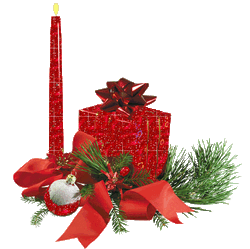 "Season to catch up with Ghosts" by Kat Adamski, North Shore Times THE ghosts of Christmas past are making a timely appearance on the North Shore. Historian and tour guide Daniel Phillips has discovered many quirky facts about Christmas since he started organising daytime history tours and Ghost tours at night. Mr Phillips became fascinated by the names on the gravestones at St Thomas Cemetery in Crows Nest, when he was walking his three year old Weimaraner dog William. "I've lived in this nick of the woods for 16 years and I realised that most of the history of the North shore is here under our feet" Mr Phillips, of North Sydney, said. "I researched their names, who they are, and what they did, and real life is always weirder than anything you can make up. I didn't even have to start stretching the truth ( for a good story) - the stories I found freaked me out, and I have a reasonably strong constitution". One story revolves around a 19th century Cammeray Mansion called Tarella, on Amherst Street, where a number of children died of Cholera. Neighbours have reported seing "lights" which are floating orbs of Ghosts , Mr Phillips said. "One of the things that really stands out when you read the letters and diaries of Sydney's pioneers is how important celebrations like Christmas were" Mr Phillips said. "They had fun trying to keep essentially European traditions in a place where even the seasons appeared to be upside down" "I explain the history of many of these traditions in a north shore context, how all of the street and suburbs names came about, and how our pioneers adapted winter traditions to summertime living" The ghost tours ( at 9.15pm and 11.15pm) and the Ghost of Christmas Past tour ( at 7.15pm) run 7 days a weekwith the exception of Christmas day, New Years Eve and New Years Day. For Details go to sydneyghosttour.com The history that's right under our feet:
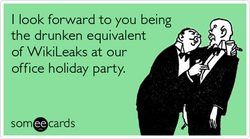 Nearly everyone has either seen a horror story take place, or heard of one at an Office Christmas Party. Many a potentially bright career has been suddenly curtailed by saying or doing something that just wasn’t smart in front of work colleagues, or the “company brass”. Daniel Phillips, founder of SydneyGhostTour.Com, Sydney’s leading History & Ghost Tour company has compiled a list of the top things NOT to do at your office Christmas Party. “ The Office Christmas Party, for the naive, looks like a great opportunity to cut loose and let your hair and guard down, all paid for by the rare generosity of the Company you work with. Unfortunately – it isn’t. The Key is to remember that this is an OFFICE event. It isn’t your home, and these people are your work colleagues, which unfortunately means that they aren't necessarily your friends” Daniel warns. These are his top 10 tips not to become a Christmas Party Horror Story: 1. Know your alcohol limits and avoid them – or if in doubt, don’t drink at all. It is better to wake up with a job and interesting memories of the night before, than with excruciating embarrassment, costly regrets, and a hangover. 2. Don’t avoid the hors d'oeuvres. If you are going to drink at all, drinking on an empty stomach is not a good idea, unless you want the alcohol to go straight to your head. 3. Avoid getting “too friendly” with anyone from the office at the party. Think David Jones, Mark McInnes , Kristy Fraser-Kirk & the $36,000,000.00 sexual harassment lawsuit than resulted from combining Alcohol, hormones and stupidity. The hottest girl or guy, is not worth the risk to your career, if they are a co-worker.. 4. Think carefully about the impression you want to create from what you wear, and dress conservatively. Ear, nose, eyebrow and lip jewellery for a gentleman or showing too much skin for a lady is probably a really bad idea. Use what you wear to the Office Christmas Party to further your good professional reputation, rather than damage it. 5. Dancing is often a part of Christmas parties these days. This is also a very dicey area. If you go on your own to a party, dance with a group, move around and mingle appropriately rather than allow one person to get the wrong impression, and dance with the chasteness you would exhibit if you were dancing with your brother or sister. There is enough gossip flying around usually already – don’t add to it by an R rated performance on the dance floor. 6. Don’t drag someone else's date underneath the mistletoe, or go under the mistletoe with anyone else, period. Even kissing your own date at an office function, no matter how quickly, is not “good form”. Save it for somewhere else. 7. Do NOT Sit on Santa's lap. If they were Jabba the hutt in a business suit before the party, they are still Jabba the Hutt in a red and white suit tonight. 8. Don’t talk shop or about your co-workers at the party. It usually backfires – and frankly, you just don’t know who is listening. 9. Sure, perhaps everyone might look like they are letting their hair down, however, don’t be tempted to start using “blue” language. It is a work function, and people have memories like elephants about how professional or otherwise you appear. Do NOT let your guard down! You may be at what seems like a festive event, but you are still swimming with sharks. 10. If the food is genuinely good – pass on compliments both to the organiser and the people at the venue. Genuine appreciation is worth it’s weight in gold. However, if the food is lousy – SHUT UP! Complaining about it is just adding to the unpleasantness of the food. Smile, be gracious, and eat later elsewhere. Bottom line, behave at the party the way you'd be expected to behave if it was a client party. Keep it dignified, light, and friendly. The rules of good office behaviour don't change because someone opens a bottle of champagne. If anything, they get even more important. Break them and people will remember. For a very long time. Of course, if you would like to experience an Office Christmas Party Horror story that is a lot of fun, and has no career casualties attached to it, SydneyGhostTour.Com and the best restaurants of Cammeray can help you have a really fantastic night. This would be a wonderful office Christmas party dinner, at a range of different restaurants featured on our website, followed by the adult version of the “Ghosts of Christmas Past” Sydney Ghost tour. If you need to organise a last minute office Christmas party, or just want to do something different for fun, you will need to contact us quickly on 02 8197 0363, or check out www.sydneyghosttour.c |
Author
|

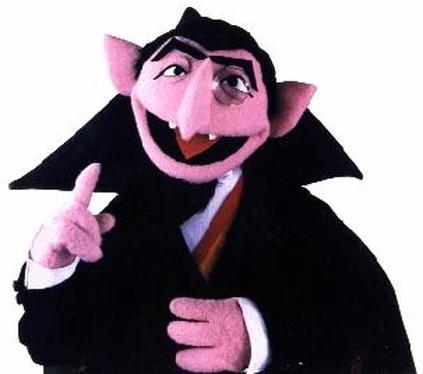
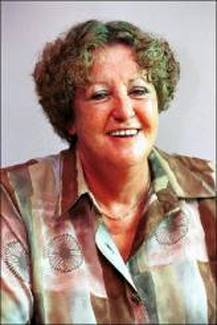
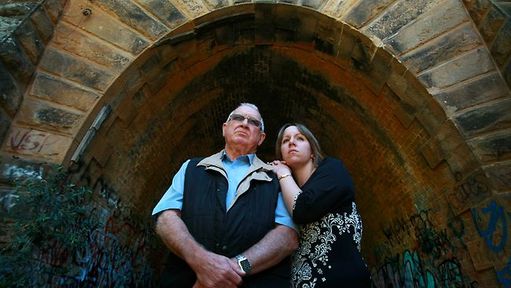
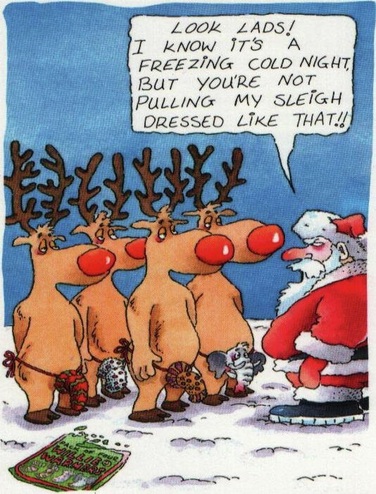
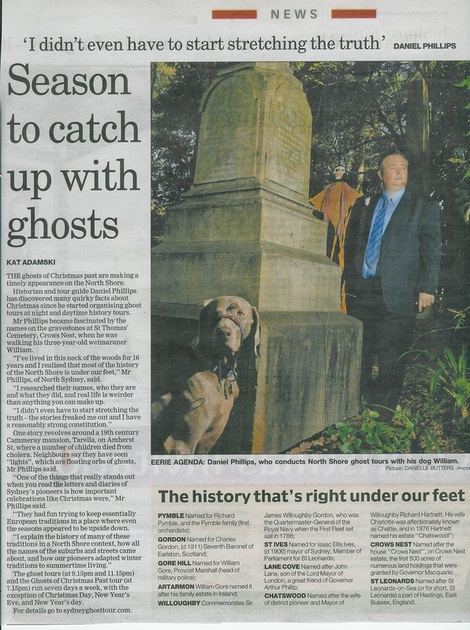


 RSS Feed
RSS Feed